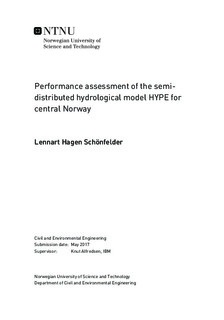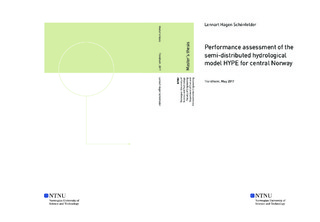| dc.description.abstract | Norway s water authorities need a comprehensive tool to generate hydrological infor-
mation for all water bodies to implement the European water framework directive.
The precipitation-runoff model HYPE was developed by the Swedish meteorological
institute SMHI. In Sweden, it is used for flood forecasting, characterization of water
body status and establishment of environmental goals. The model structure and the
spatial assignment system of hydrological properties makes it suitable for predictions
in ungauged catchments.
The main question for this thesis was to evaluate, if the semi-distributed model is a
suitable simulation framework for Norway and if predictions for ungauged catchments
are of satisfying accuracy.
HYPE was applied and tested for Norway. The model was set up for a region of
81,900 km 2 in central Norway and divided into ∼ 2500 sub-catchments. National data
bases for land use and soil types were combined to assign physiographical attributes
to sub-catchments. 40 streamflow stations were implemented, the discharge time
series of ten stations were used for calibration, validation and regionalization.
HYPE was calibrated using a multi-basin approach, i.e. it was not calibrated to
individual stations but for optimal performance across a selection of five stream flow
stations. Their respective drainage areas are unregulated and range in size from 100
km 2 to 3000 km 2 . The model fitness was assessed with split-sampling for a period of
five years. Kling-Gupta-efficiency (KGE) was applied as index of model performance.
The regional calibration resulted in a mean KGE of 0.73 and 0.71 for the calibration
and validation period respectively.
The model configuration was transferred to five independent proxy catchments with
comparable catchments characteristics. The model yielded a mean KGE of 0.49 for
the selected regionalization catchments. The regionalization was expanded to all
implemented gauges, resulting in a mean KGE of 0.51. Performance assessment of
the ungauged catchments show a high variance in model fitness. | |

